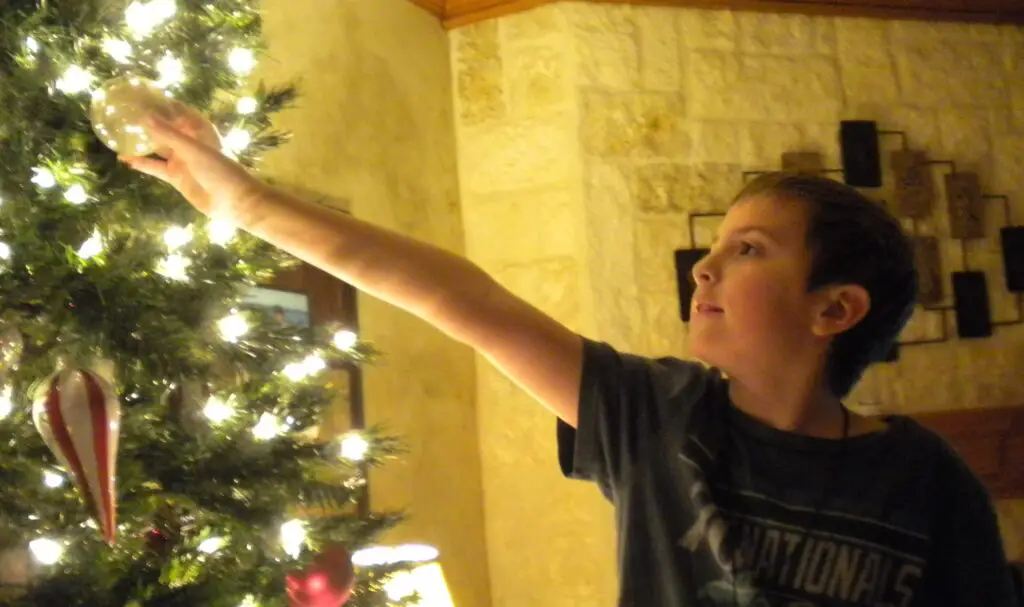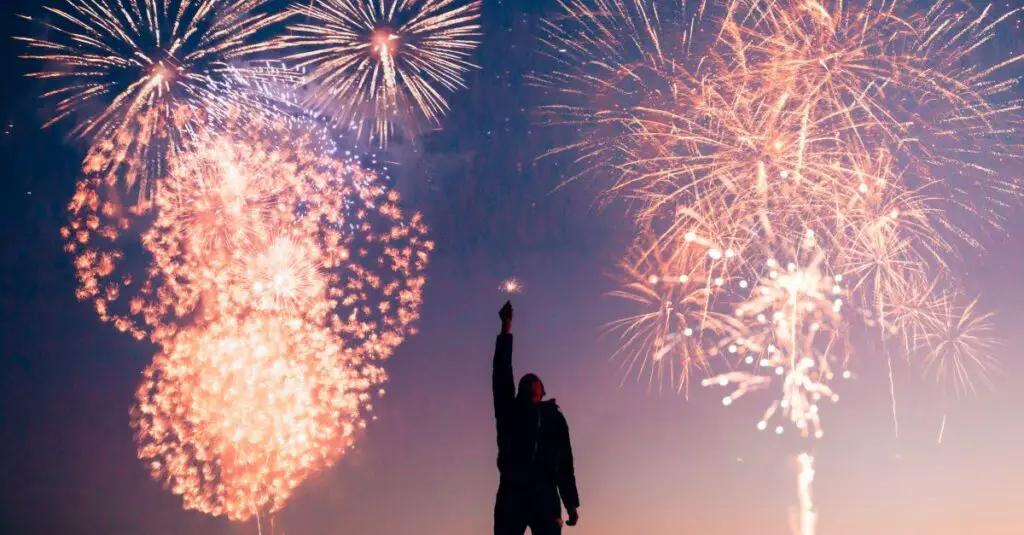Autism and Holidays: Why Special Occasions Can Be Challenging
Any special holiday or observance is typically filled with joy, excitement, and a break from daily routines.
Autism and holidays can be a stressful and even overwhelming combination, and as a result, it isn’t always the easiest to navigate. It can be particularly hard for families with both neurotypical and neurodiverse individuals in the same household.
Each holiday can bring unique challenges, and it’s important to consider the stimulation and even the potential for chaos of each one.
For example, Independence Day is filled with loud fireworks and bright and sudden lights while dark, creepy effects that often set the stage for Halloween can be frightening.
The traditional “holiday season” that occurs from Thanksgiving until after the first of the new year is filled with special meals, parties, gift giving, and company, that can bring extra challenges with autism behaviors in both autistic children and adults alike.
Even figureheads that symbolize various holidays, such as Santa Claus and the Easter Bunny can be overwhelming for many.
While some individuals with autism truly relish each and every holiday, others struggle with extra expectations and unknowns.
Helping individuals cope with changes in routines during the holidays and discover ways to help them embrace and enjoy the various celebrations.
The key to ensuring that autism and holidays are a pleasant and happy experience overall for individuals on the autism spectrum lies in understanding their unique needs and providing the necessary support.
Having positive autism family support is also important as well.
(Learn more about 8 stress busters to help conquer feeling of being overwhelmed when you have autism.)
6 Tips for Ensuring A Positive Experience for Autism and Holidays
- Prepare for Change.
Establishing a predictable environment is crucial for individuals with autism.As a holiday nears, it can be beneficial to discuss and prepare for any changes that will occur.
Use visual aids, such as social stories or calendars, to help create a visual representation of the upcoming events and modifications in routine. By visually presenting the changes, individuals can have a better understanding of what to expect. By planning autism holiday activities in advance, it can diminish the likelihood of sensory overload and meltdowns.
This preparation can help reduce anxiety and promote a sense of control and understanding with autism and holidays.
It can also be beneficial to gradually introduce changes to the routine leading up to the holiday season.
For example, if there is a different mealtime or bedtime (if a child) during the holidays, gradually shift the schedule in the days or weeks leading up to the event.
This approach allows individuals with autism to adjust to the upcoming changes at a manageable pace.
- Maintain Familiarity and Routine.
While the holiday season may bring new decorations, traditions, and foods, it is important to maintain some familiar elements that provide comfort and familiarity.Consistency with autism and holidays is crucial, as it helps autistics feel secure in their environment.
When possible, keep daily routines consistent as much as possible, ensuring that essential activities like mealtimes, sleeping patterns, and personal care remain unchanged.
This stability can act as an anchor amidst the festivities, helping individuals navigate the changes that come with autism and holidays with greater ease.
- Consider Sensory Stimulations.
Most holidays involve increased sensory stimulation, such as bright lights, loud music, and crowded gatherings.For individuals with autism, these sensory changes can be overwhelming and can lead to sensory overload and excessive stimming.
To mitigate autism sensory overload, create designated quiet spaces where individuals can retreat and relax when needed.
These spaces should be free from excessive noise and bright lights and may include calming elements like soft lighting, comfortable seating, and familiar objects.
Additionally, providing sensory tools and strategies can greatly support individuals with autism during the holidays.
Noise-canceling headphones can help reduce auditory input, while fidget toys or sensory balls can provide tactile stimulation and serve as a means of self-regulation.
Weighted blankets or vests can also provide a calming effect for individuals who benefit from deep pressure.
Parents should be careful to not “force” a child to do expected or traditional activities as part of autism and holidays.
But, encouraging them to participate in ways they feel comfortable can set the stage for future enjoyment of various traditions. In fact, many autistic children look forward to every holiday and delight in all the wonders and activities, thanks to parental preparation and reasonable expectations.
(Learn more about these 10 proven techniques for managing autism and sensory issues.)
- Practice Communication and Social Skills.
The holiday season often includes social gatherings and interactions.Practicing social skills and effective communication techniques can be immensely beneficial as part of preparation for autism and holidays.
Encourage autistics to rehearse and role-play social scenarios, helping them understand appropriate greetings, turn-taking, and conversation skills.
Role-playing can help individuals with autism feel more confident and prepared, reducing anxiety and awkwardness in social situations.
Adults with autism can in particular benefit from role-play and prep, especially if it’s a social occasion where many of the individuals there are strangers. (An example is a company party.)
Additionally, visual supports can aid in communication when it comes to autism and holidays.
Picture exchange communication systems (PECS) or communication boards with relevant symbols or pictures can facilitate communication and understanding for individuals who may struggle with verbal communication.
It is important for family members and friends to be patient, listen attentively, and provide ample time for individuals with autism to express themselves.
Consider each holiday and the routines or traditions it brings, and go over expectations and even practices.
For example, a child may need to understand a family’s routine when opening gifts at Christmas, for example.
Behaviors can also be discussed, such as how to act if a gift isn’t desired, to hurt people’s feelings.
Another example is choosing whether to dress up at Halloween or not, and whether to trick or treat. If so, go over what to say at people’s door and how to act if they offer candy that isn’t preferred.
- Utilize Inclusive Activities and Adaptations.
When planning holiday activities, prioritize those that can be enjoyed by individuals with autism, when possible.Consider their specific interests and strengths. For instance, sensory-friendly activities like making ornaments, baking, or creating quiet spaces to read or engage in solitary hobbies can provide moments of calm amidst the busy times.
By incorporating activities that align with their preferences, individuals with autism can actively participate in the holiday celebrations.
Adapting activities to meet unique needs is also essential with autism and holidays.
For example, if a holiday craft involves fine motor skills that may pose a challenge, provide adaptive tools such as thicker paintbrushes or larger beads for threading.
Modifying the environment to reduce sensory triggers, such as dimming lights or using softer music, can create a more comfortable and inclusive atmosphere for individuals with autism.
By making these adjustments, autistics can engage in activities that promote their enjoyment and participation.
- Build Sensitivity and Understanding.
Foster an environment of acceptance and understanding with friends, family, and loved ones about autism and holidays.Encourage them to learn about the individual’s specific needs and challenges, including sensory sensitivities, social difficulties, or communication differences.
Increased awareness will enable everyone to provide appropriate support and create a welcoming atmosphere during holiday gatherings.
When family members and friends understand the potential challenges faced by individuals with autism, they can make simple but significant adjustments to accommodate an autistic’s needs.
For instance, they can communicate clearly, give individuals time to process information, and avoid overwhelming them with too many social demands.
Simple gestures like offering a quiet space, allowing breaks, or avoiding surprises can go a long way in ensuring a positive and inclusive experience for individuals with autism.
Again, this is important to stress that these tips work for neurodiverse individuals of any age, child or adult!
On a personal note, I have never had any major problem with preparing for the holidays as an autistic child, other than when I younger I did have some trouble getting used to having so many people around.
When I was a kid my parents would sometimes throw parties in our house, and it was a little difficult at first with all the lights and noise.
I remember finding it annoying having to maneuver around people around my own house when I was trying get a snack, but I’m sure everyone can relate to that.
My parents were also always supportive in letting me know I could escape to my room as a quiet space in case I felt overwhelmed or over-stimulated. While social gathering in my home were a bit overwhelming at first, I adapted.
I’m glad I was exposed to large family and social gatherings when I was young because it allowed me to get used to the noise and change in routine.

I’m happy my parents didn’t stop having social events just on my behalf, but gave me ways to deal with stress if I needed to.
The holiday season can be a time of joy and togetherness for individuals with autism.
By understanding unique needs with autism and holidays and employing strategies to accommodate changes in routines, the various occasions can be navigated with greater ease and enjoyment.
(Learn more about 8 popular ways to manage and master autistic social awkwardness.)
Embracing inclusive activities, providing sensory support, and fostering a supportive environment will ensure that individuals with autism can fully participate in the festivities and create cherished holiday memories.
The holidays are intended to be celebrated with others, and taking steps to find joy together and includes everyone regardless of whether someone is neurodiverse or typical is the ultimate goal.
By implementing these strategies and fostering understanding and acceptance, autism and holidays can be an amazing experience!
Additional Challenges Individuals with Autism Face
Learn more about other issues that autistics face:
- New Research Reveals Autism Mental Health Linked to These Disorders
- Is Autism a Disability? Surprising Reasons for the Debate
- 6 Fascinating Facts About Autism You Probably Didn’t Know
- 8 Popular Ways to Manage and Master Autistic Social Awkwardness
- Autism and Poor Hygiene: The Smelly Truth to Overcome
- Breaking Down Barriers that Challenge Autism and Friendships
- Anxiety and Autism: 5 Powerful Strategies to Conquer Emotions
- Growing Up Autistic: How I Overcame Challenges and Now Thrive
- 6 Ways to Tackle Autism Fireworks Anxiety and Sensory Overload
- Autism Family Support: 5 Ways to Achieve A Happy Household

 To mitigate autism sensory overload, create designated quiet spaces where individuals can retreat and relax when needed.
To mitigate autism sensory overload, create designated quiet spaces where individuals can retreat and relax when needed. Consider each holiday and the routines or traditions it brings, and go over expectations and even practices.
Consider each holiday and the routines or traditions it brings, and go over expectations and even practices.